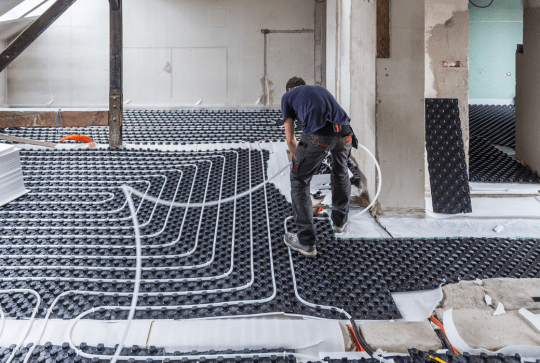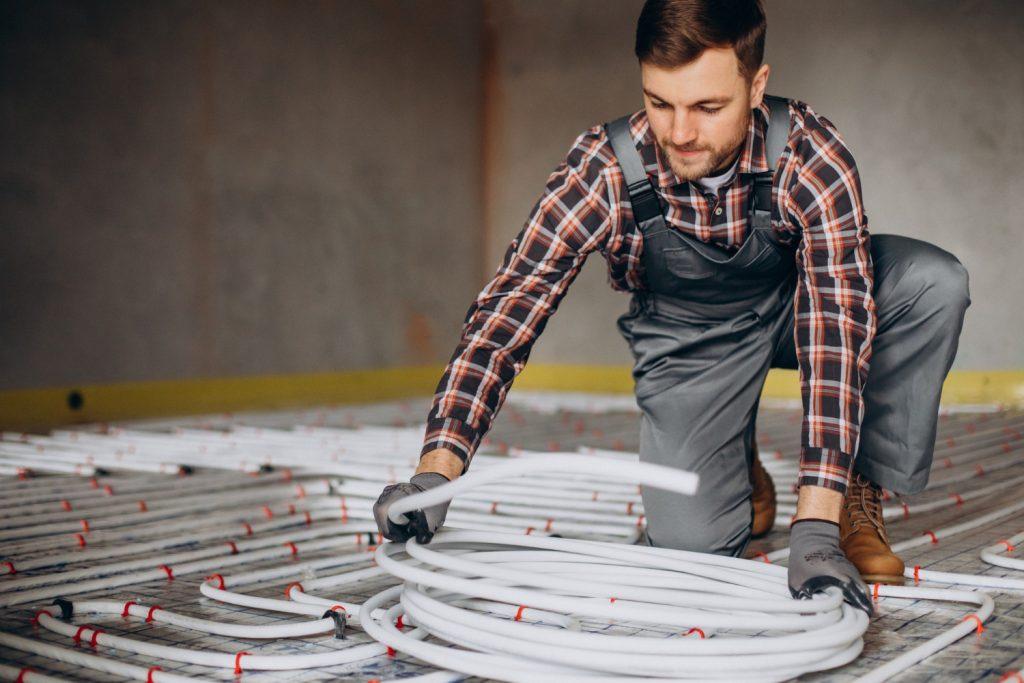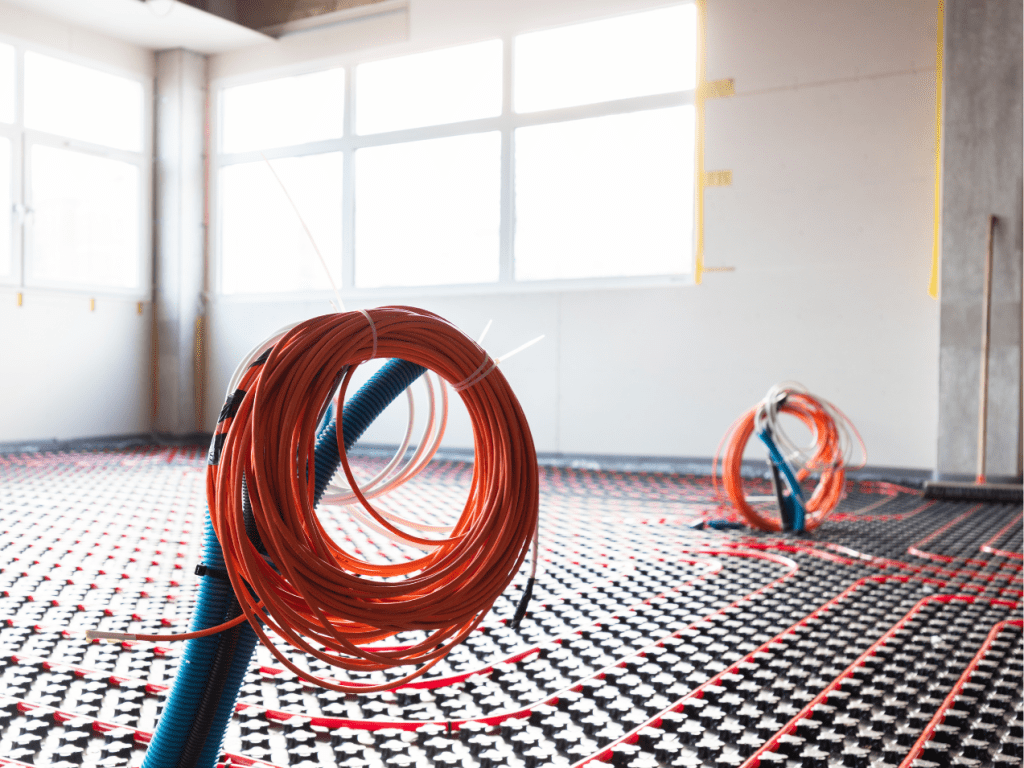18
Jun 2024
What Is Wet Underfloor Heating?
Wet underfloor heating, also known as a water-based or hydronic underfloor heating system, involves circulating warm water through a series of pipes laid beneath the floor surface. This system is connected to your home’s central heating system and operates by pumping heated water from a boiler or a renewable energy source (such as a heat pump) through this network of pipes. Here’s a closer look at how wet underfloor heating works and its benefits:
How Underfloor Heating Works
-
Piping System: The network of pipes is usually made from durable materials like polyethylene, and it’s installed on top of insulation panels to ensure that heat is directed upwards into the room rather than being lost downwards.
-
Heat Source: The water is heated by a boiler or a renewable source and then circulated through the pipes. The system can be designed to cover the entire floor area, providing a uniform heating surface.
-
Temperature Control: The flow of hot water is regulated by thermostats and control systems, which can be adjusted to maintain the desired temperature in each room. This allows for zoning control, meaning different areas of the house can be heated to different temperatures according to use and preference.

Benefits Of Underfloor Heating

- Efficiency: Wet underfloor heating systems are generally more efficient than traditional radiators, especially when paired with modern condensing boilers or renewable energy sources. This efficiency comes from the system’s ability to operate effectively at lower temperatures while still providing a comfortable level of warmth.
- Comfort: The system delivers heat evenly across the floor, eliminating cold spots and creating a comfortable environment. The heat radiates upwards from the floor, ensuring that the warmth is felt where it is most needed.
- Space Saving and Aesthetics: Without the need for radiators, you have more wall space and a cleaner interior design. This can be particularly beneficial in rooms with large windows or bi-folding doors where wall space is at a premium.
- Versatility: Wet underfloor heating can be used with a variety of floor coverings, including tile, stone, wood, laminate, and even carpet, provided the carpet’s thermal resistance is within certain limits.
Considerations
- Installation Cost and Complexity: Installing a wet underfloor heating system can be more expensive and complex compared to electric underfloor heating, especially in retrofit projects. It’s typically best suited to new builds or major renovations.
- Floor Height Issues: The installation of wet underfloor heating can raise the level of the floor, which might require adjustments to doors, floorboards, and fixtures.
- Longer Warm-Up Time: Compared to electric systems, wet systems may take longer to warm up. However, once at the desired temperature, they are efficient at maintaining it.
In summary, wet underfloor heating is a highly efficient and comfortable heating solution suitable for a variety of homes. Its effectiveness in distributing heat evenly and its ability to work with low-temperature heating sources make it an appealing choice, especially for new constructions or major renovations looking for a sustainable and long-term heating solution.
If you are in need of underfloor heating supplies, don’t hesitate to contact our friendly team and we will be happy to help.

